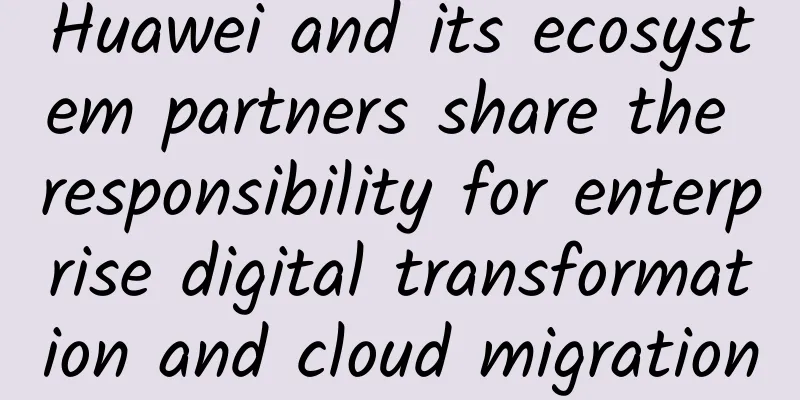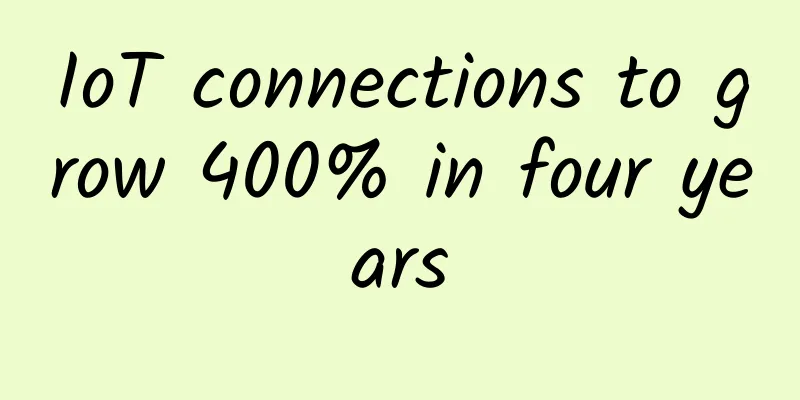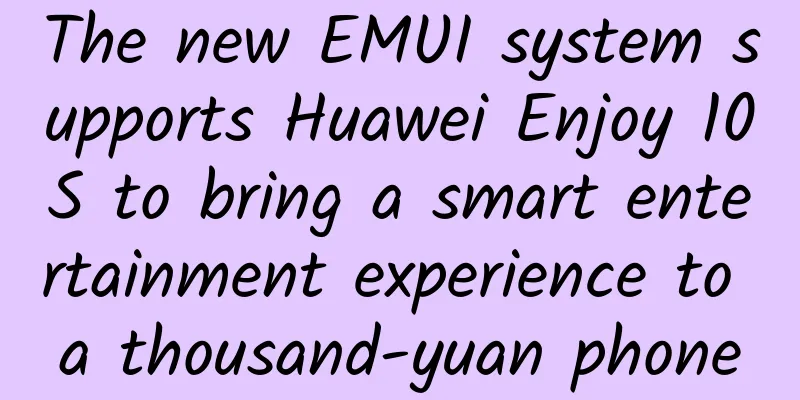Huawei and its ecosystem partners share the responsibility for enterprise digital transformation and cloud migration

|
[51CTO.com original article] There is no doubt that more and more companies are beginning to realize that digital transformation and cloud computing are inevitable strategic choices for companies in the future. As a result, many industry customers have launched "digitalization" strategic layouts, and the importance of industry clouds is increasing day by day. The so-called industry cloud refers to cloud infrastructure with industry attributes and business characteristics. Hu Weiqi, director of IT Solution Sales Department of Huawei Enterprise BG China, said in an interview with reporters that when facing digital transformation and cloudification, the difficulties and problems encountered by various industries vary greatly, and the demands for cloud are obviously different. The birth of industry cloud is due to the personalized business needs of enterprises in various industries.
Hu Weiqi, Director of IT Solution Sales Department, Huawei Enterprise BG China Huawei believes that in order to achieve great success in the industry cloud market and meet the needs of customers in various industries, Huawei must have enough partners. Therefore, Huawei Industry Cloud hopes to work with partners from all walks of life to face customers' transformation needs, provide customers with differentiated and innovative solutions with industry characteristics that can meet their needs, help customers solve problems and create value. Huawei and its ecosystem partners share the responsibility for enterprise digital transformation and cloud migration Entering the cloud era, enterprises are opening up new paths for digital transformation through co-shaping ecological rules. Huawei, UFIDA, iSoftStone and other companies are also actively practicing. As a pioneer, Huawei is increasingly aware that if we want to achieve prosperity on the cloud, it is more important to expand the pie, industry and market than to expand our own share; managing cooperation is more important than managing competition; and benefit sharing is both the driving force of the ecosystem and the result of a successful ecosystem. These are also the three core concepts of Huawei in building a cloud ecosystem. "We share business opportunities with our ecosystem partners, from open sharing of policies to joint investment and joint fronts, to support our partners and help their businesses thrive," said Hu Weiqi. "In terms of specific product solutions, Huawei invests in R&D through the OpenLab to jointly innovate with partners, incubate joint innovation solutions, and use the lab as a demonstration platform to bring solutions to market." Ecosystem should be a mutually beneficial symbiotic relationship in which you have me and I have you. Huawei has always adhered to the concept of openness, cooperation and win-win in building cloud ecology. In specific business scenarios, Huawei strives to play the role of "soil and energy" in the ecology, adheres to the pipeline strategy, and does not compete with partners for profits; and promises: "No application on top, no data on bottom". In the eyes of reporters, it is Huawei's promise that has given ecological partners great confidence and allowed more partners to enter the construction of Huawei's cloud ecology. Although Huawei does not make industry applications and does not operate data, it will provide support for partners' industry application development, market expansion and customer service, and will work with partners to protect customer data and solve customers' personalized needs. So, what does Huawei do specifically? Huawei does what it is good at. Huawei Enterprise Cloud "focuses on the IaaS layer, enables the PaaS layer, and aggregates the SaaS layer". It mainly does the IaaS layer, operates and serves through partners, establishes a lightweight P layer, and aggregates S layer partners.
Wang Zhongyu, Senior Vice President of iSoftStone Wang Zhongyu, senior vice president of iSoftStone, a partner of Huawei for many years, said: "On the large platform of Huawei, if you want to do a good job in industry cloud, you need good solutions. For example, UFIDA can put application services on the Huawei Cloud platform based on the basic platform of Huawei Cloud. Another example is to build a city service in each city through the city cloud. When these application service partners join Huawei Cloud to provide services for enterprises, governments, industries, and people's livelihood, how can a whole set of solutions be implemented efficiently and quickly? Huawei, UFIDA, and iSoftStone can work together. Huawei Cloud provides the foundation, UFIDA provides application services, and iSoftStone provides the service entrance. This is a very good solution." Focus on five major industries At present, Huawei's industry cloud mainly focuses on five major industries, including government, finance, and public security. In these industries, Huawei and its ecosystem partners are jointly making bold innovations, and making different degrees of innovation according to different types of partners to fully meet the diverse needs of industry customers. It is understood that data as of the end of 2016 shows that Huawei and its partners have created dozens of joint innovation solutions, and in 2017, this number will continue to increase. Hu Weiqi said that this year, Huawei will pursue quality and market acceptance of joint solutions, and strengthen the sharing of business opportunities between Huawei and its partners at the front end of the market. Regarding the deployment of Huawei's industry cloud, Huawei hopes to: on the one hand, work with ecological partners to help customers achieve cloudification and integrate data and resources. Because frankly speaking, China's cloud construction is still in its early stages, and even for enterprises that have already achieved cloudification, there are many unsatisfactory actual applications. On the other hand, together with partners and customers, the three parties will jointly innovate and solve problems for customers' pain points in digital transformation. Only by combining the strengths and wisdom of all can we solve problems efficiently and effectively. Through interviews and exchanges, the reporter saw that the market is not only about competition, but also about cooperation. He also deeply felt Huawei's determination to implement the ecological concept down to earth with its ecological partners, and experienced the mutually beneficial symbiotic relationship in the ecological environment. Future innovation must be based on ecological innovation, that is, joint innovation among customers, partners, and Huawei! [51CTO original article, please indicate the original author and source as 51CTO.com when reprinting on partner sites] |
Recommend
Huawei's Smart City Nervous System shines at CIIE
From August 21st to 23rd, the 2018 (4th) China Sm...
Huawei's Li Peng: Accelerate the prosperity of 5G and its evolution to 5.5G, and accelerate the move towards an intelligent world
From February 27 to March 2, MWC 2023 (2023 Mobil...
How can blockchain become a “trust machine” amid market chaos?
In recent years, the development of blockchain te...
The latest global ranking of 5G standard essential patents: Huawei first, Samsung second
Recently, IPLytics, an internationally renowned p...
Aruba: Modernizing the network to enable ubiquitous connectivity
Network edge is an inevitable trend, and user nee...
Ruijie worked hard for three days and three nights to help build the network of Xi'an Fangcang Hospital
Xi'an, a world-renowned ancient capital and c...
How network maintenance personnel can solve IP address conflicts
I believe that every maintenance personnel will e...
IPv6 conversion service - rapid business support for IPv6 practice
What is IPv6 conversion service? IPv6 Translation...
What is Bluetooth Low Energy?
Bluetooth Low Energy is a new Bluetooth wireless ...
The core network and its vital role in cellular connectivity
The emergence of the Internet of Things (IoT) and...
Huawei releases SD-WAN private line solution to build enterprise wide area interconnection with ultimate experience
At HUAWEI CONNECT 2017, Huawei released the SD-WA...
Operators' 2G/3G network withdrawal may accelerate
As 4G coverage deepens and 5G commercial scope co...
Emerging technology trends to watch in 2023
As the world of technology continues to evolve, i...
What is EVPN switching technology?
In an evolving network landscape, the need for fa...
How much do you know about the legendary network speed limit?
1. Recently, many people have said that the unlim...







![[5G Encyclopedia] How does 5G implement TDD?](/upload/images/67eb9cae690e9.webp)

